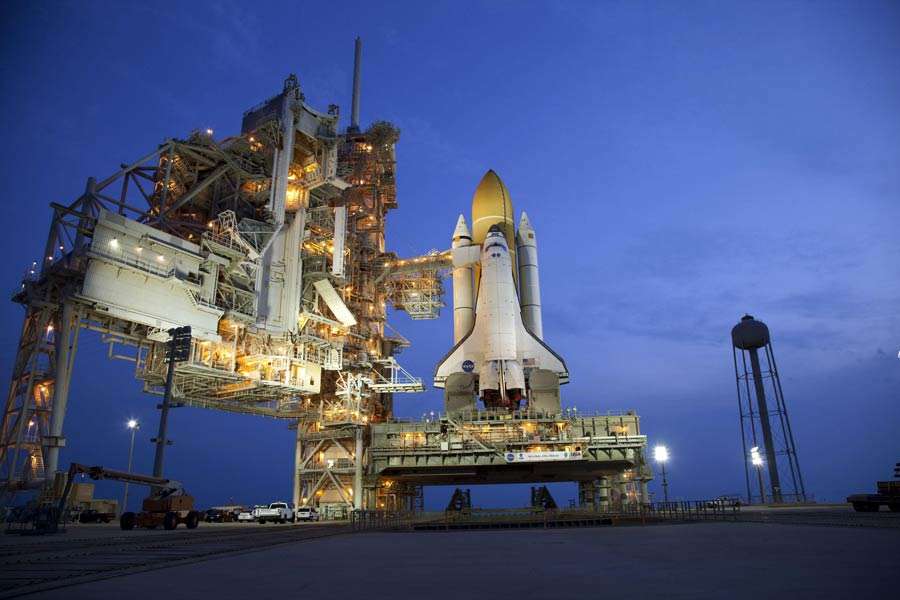Apollo11
Posts: 24082
Joined: 6/7/2001
From: Zagreb, Croatia
Status: offline

|
Hi all,
Sad... next Friday will be the last Space Shuttle flight... 
quote:
Mission accomplished? The shuttle's last flight

In a few days, four astronauts will take the lift to the top of the launch tower at Cape Canaveral in Florida, and settle in their seats on the space shuttle Atlantis. The crew will wait patiently until, with only eight seconds of countdown remaining, the shuttle's massive turbo pumps will force several hundred thousand gallons of liquid hydrogen and oxygen together inside the spacecraft's three main engines. In seconds, temperatures in the engines will soar to 6,000C and super-heated steam will blast from the spaceship. Two boosters, containing an explosive mixture of aluminium powder and perchlorate oxidiser, will be ignited; the giant bolts holding the straining shuttle to the ground will be blown open and, if all goes well, Atlantis will rise on a pillar of white vapour on its way into orbit – and history. The last flight of a space shuttle will have begun.
Atlantis's mission, the 135th flight of a space shuttle, is routine: to carry supplies to the International Space Station. The mission – set for an 8 July launch – will nevertheless attract unprecedented attention. This will be our last chance to watch the flight of the most complex machine ever built, a craft designed to make space travel commonplace but which ended up becoming the most dangerous form of transport ever devised, a mixture of technological ingenuity and botched political compromises.
The story of the shuttle perfectly encapsulates the stuttering history of the American space programme. The first craft, Columbia, was launched on 12 April 1981, and flown by veteran astronauts Robert Crippen and John Young. It was a flawless mission that ended, after 37 orbits, when Crippen flew the 120ft-long craft on an unpowered glide across America to land at Edwards Air Force base in California. The flight was greeted rapturously. The shuttle's revolutionary engines had survived their roasting while its thermal insulation tiles had ensured the craft endured the searing temperatures of re-entry. The day of the expendable launcher was over, Nasa announced. The reusable spaceship had arrived.
And for the next four years, the US fleet of four shuttles – Columbia, Challenger, Discovery and Atlantis – lived up to those expectations. Shuttles flew huge satellites into Earth orbit and carried Sally Ride, the first American woman into space, along with citizens of Germany, Mexico, Canada, Saudi Arabia and Holland. One crew even repaired a broken communication satellite in orbit. The sight of a gleaming white spaceship skipping effortlessly into orbit became reassuringly commonplace. Space had surely been conquered.
The notion was a dangerous delusion, however. The shuttle had been starved of cash during its development and was too heavy for its own good. It had to rely on solid boosters to give it an extra kick-start into orbit and needed extra-thick insulation tiles to survive re-entry. A crew escape system was also scrapped.
On 28 January 1986, the consequences of these compromises were cruelly exposed. A seal in a booster of the shuttle Challenger failed at lift-off. Pressurised hot gas sprayed over the craft's fuel tank and the spaceship exploded 73 seconds into its flight. Its crew of seven, which included schoolteacher Christa McAuliffe, were killed. The configuration of solid-fuel boosters and liquid-fuelled engines on the shuttle had proved disastrous.
Remarkably, the shuttle programme survived, though far greater care was expended on launches. As a result, costs soared. Far from making access to space cheap and reliable, the shuttle became an extraordinarily expensive vehicle to launch. Yet it still carried out some remarkable missions – including several to repair the Hubble Space Telescope and flights that allowed astronauts to begin construction of the International Space Station.
Then, on 1 February 2003, tragedy struck again. Columbia – damaged by insulation that fell from its fuel tank – disintegrated over Texas as it swept towards its landing site in Florida. All seven astronauts on board were killed. Launches were again suspended and many experts predicted the craft would never fly again. In the end it was agreed to resume flights, but to ground the craft once the station had been completed. With the flight of Atlantis next month, that task will have been achieved and the three surviving shuttles will be given homes at museums around the US. After that, America will have to rely on Russian rockets to take its astronauts into space: an ignominious end for an extraordinary flying machine. We will not see its like again.
Leo "Apollo11"
_____________________________
 Prior Preparation & Planning Prevents Pathetically Poor Performance! A & B: WitW, WitE, WbtS, GGWaW, GGWaW2-AWD, HttR, CotA, BftB, CF P: UV, WitP, WitP-AE
|
 Printable Version
Printable Version
















 Guess I will just have to make do with the one pager........on this occasion mwahaaaa
Guess I will just have to make do with the one pager........on this occasion mwahaaaa












 New Messages
New Messages No New Messages
No New Messages Hot Topic w/ New Messages
Hot Topic w/ New Messages Hot Topic w/o New Messages
Hot Topic w/o New Messages Locked w/ New Messages
Locked w/ New Messages Locked w/o New Messages
Locked w/o New Messages Post New Thread
Post New Thread